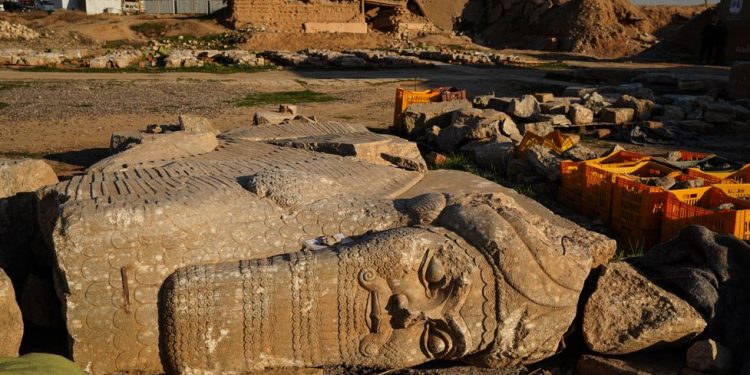The Muslim Brotherhood Islamism: A Deadly Mechanism for Fueling Extremism and Undermining the Civil State
By Karim Shafiq
In light of the conflicts and crises that have engulfed the region, especially during the Arab Spring and the contagion of revolutions that spread from Tunisia to Cairo, Syria, and Libya, a pressing question remains: Why are democratic projects stalled, and why does the modern state in the region fail to break free from the conditions and structures of backwardness?
The question of modernity, beyond theoretical frameworks, and the absence, or rather the erasure, of the values of citizenship and civility, are connected to structural issues related to the formations of states in the post-colonial era, as well as the deviant path resulting from the syncretic/combative fusion of Islam, nationalism, and Arabism. This oppressive formula appears to function as a monopolistic mechanism based on the confiscation of all those who oppose it, while granting legitimacy to those who seek refuge in its narratives.
This totalitarian narrative, adopted by Ba’athists in Syria and Iraq, for example, reveals their apparent commitment to secularism, as promoted through their pragmatic rhetoric and discourse. Within their governance, religion, like identity issues related to nationalism and Arabism, is a temporary tool used to achieve political gains and surplus power in terms of wealth and influence.
Therefore, the Muslim Brotherhood has operated within these environments since its founding in 1928, continuing to manufacture “deadly identities,” promote sectarianism, and dismantle civil citizenship. In fact, the Brotherhood has served as a political proxy that regimes resort to in order to cover up their crises and obfuscate their various failures in rights, policies, and issues of civil, economic, and social justice—especially the mismanagement of national, ethnic, and sectarian diversity.
In numerous historical and political events, the parent organization of political Islam—the womb from which Islamists emerged since the late 1920s—has acted as a support front for suppressing any democratic and civil movement, as well as for building political alternatives. It has also worked to eliminate liberal and leftist projects and distort any political vision capable of establishing a social and political contract that grants individuals and cultural and societal components their rights according to principles of political justice and modern definitions. All of this is far removed from totalitarian references and their traditional, primitive conceptions.
This dynamic was encapsulated by the Egyptian thinker Farag Foda, who famously said: “The vicious circle begins its terrifying cycle. In the absence of civil opposition, military rule will lead to religious authority. Religious authority will only be seized through a military coup, which in turn hands over power to a new religious authority.”
Since Hassan al-Banna founded the Muslim Brotherhood in 1928, the group has sought to create a parallel identity to the civil state—one that emphasizes organizational and religious loyalty at the expense of national loyalty and inclusive citizenship. This fragmented and imagined identity relies on structured mechanisms aimed at producing individuals as social carriers of a global religious project with organizational and movement characteristics.
This has resulted in the demise of civil diversity and the establishment of religious and sectarian discrimination, as well as systematic exclusion. Within the Brotherhood, the individual faces an organizational and ideological mechanism that begins with recruitment and continues through the “allegiance” process, culminating in the formula of “loyalty and disavowal.” This creates a cohesive collective identity that dissolves all previous social ties, purges social memory with its diversity, and even places personal and social history before the “group,” within the framework of “modern ignorance,” which historically resembles pre-Islamic disbelief.
Thus, the individual abandons his identity and national affiliation in favor of “Islamic internationalism,” the “caliphate project,” and “world dominance.” Ultimately, he joins the “ideological family,” even at the expense of his national family. This coercive process fosters a moral identification between individual and group, making him ready for complete obedience and submission—without review or questioning—to the decisions of the “Guidance” and the “Guidance Office.”
It can be said that the Brotherhood has succeeded in building an organizational structure that undermines the institutions of sovereignty, weakens the concept of the civil state, and grants itself privileges above the law under religious and moral pretexts.
This destructive formula for citizenship permeates the social fabric and incubators of the Brotherhood, making violence likely to take on rising waves, curves, and recurring cycles. It appears as a central point in the group’s foundational literature, controlling the thoughts, approaches, choices, orientations, and both the theoretical and practical political stances of its members. Founding guide Hassan al-Banna states in his book, The Message of Teachings: “I mean by detachment: that you free your idea from everything else… People, in the eyes of a sincere brother, fall into six categories: a Muslim mujahid, a dhimmi with a treaty, a neutral, a combatant, each with its own judgment… Within these categories, individuals and entities are weighed, and loyalty and hostility are determined.” This is a political-religious identity division that classifies individuals based on their loyalty or hostility to the Brotherhood’s ideology.
According to the platform Ikhwan Online, “Every monotheistic believer… deserves love and support, and every infidel deserves hatred and hostility… and loyalty and disavowal are subordinate to love and hatred.” Thus, social loyalties extend to precisely categorize everyone based on their ideological and politicized affiliation.
The concept of loyalty and disavowal within the Muslim Brotherhood goes beyond being a mere radical religious formula for discrimination and division based on religious identity; it is also a mechanism for imposing hegemony. Consequently, all of this can be understood within the Brotherhood’s religious-movement framework, as a coercive means that strips non-members of their citizenship, marginalizes opponents, and even rejects forms of religiosity that do not align with their ideological visions.
In other words, sectarianism, in this dynamic sense, is not purely religious but constitutes political sectarianism in its primitive and instinctive form—transforming individual behavior into tribal fanaticism and factional loyalties that kill social diversity and civility, effectively encircling society from within. The group exploits the state of loyalty to create a protective framework that justifies hostility toward other sects, political opponents, or even states opposing political Islam. Loyalty thus becomes a criterion for determining political allegiance and organizational accountability.
From this perspective, norms from the pre-state, pre-modern institutional era are generalized, leading to hierarchical perceptions of individuals within society. These perceptions are governed by patriarchy and a paternalistic organizational hierarchy. For example, Christians/Copts are considered inferior and treated as “dhimmis.” Other ethnic groups, such as Amazighs and Kurds, are viewed with suspicion regarding their loyalties, and fabricated narratives are promoted to depict their existence as conspiratorial—such as describing Kurds as “separatists,” and similar accusations against Amazighs.
The idea of disavowing “opponents,” with its religious veneer and political-ideological reality, is used as a discourse to sustain a deadly identity. The Brotherhood’s discourse reduces society to believers and infidels, “dar as-salam” (house of peace) and “dar al-harb” (house of war), with non-Muslims often automatically regarded as “enemies.”
Therefore, the call to reduce identity to a single affiliation creates “a dangerous scourge: it plants a fanatic, sectarian, authoritarian attitude in individuals, sometimes suicidal, often transforming them into killers or supporters of killers,” as Lebanese-French thinker Amin Maalouf states. He explains that an identity reduced to one side becomes fertile ground for murder and division. In his book Deadly Identities, Maalouf discusses Lebanon’s sectarianism as a paradigmatic example: “We are told that power-sharing among sects is temporary, meant to ease tensions, and that gradually we will be pushed toward a sense of national identity. But the true logic is quite the opposite: each sect perceives its share as insignificant, and this sensitivity turns into a permanent political discourse led by some politicians aiming to inflate it… Then the sense of national identity recedes and diminishes—sometimes to the point of disappearance—and often ends in bitterness, sometimes in bloodshed… If you are in Western Europe, this could lead to Belgium; if in the Middle East, it could lead to the Lebanese Civil War.”
This illustrates how sectarian power-sharing erodes national identity and amplifies conflicts. Maalouf also recounts his memories of the Lebanese Civil War, saying: “On April 13, 1975, he heard gunfire and more than 20 people were killed outside his house.” He adds, “Ethnic tension can turn anyone into a killer.” Here, he emphasizes that violence and its cycles are inevitable, and that the perpetuation of sectarianism makes bloody conflict not a mere accident but a continuous moment that captures and dominates the entire scene.
The paradox of this prevailing and dominant sectarian situation—where forces of political Islam alternate in fulfilling their functional roles, creating opportunities for mafia-like military regimes to renew their legitimacy, as was the case with the Ba’ath—is that it appears as a process of role exchange, a division of labor, and the management of interests.
For example, the Iraqi branch employed the “faith campaign” tactic during its conflict with Iran and the eight-year war, legitimizing one of the genocidal campaigns against the Kurds, known as “Anfal,” by framing it with religious overtones and positioning the conflict within a historical narrative of “knights of divine right” versus “pagans.”
The apparent and marginal hostility between Islamists and these regimes cannot conceal the pragmatic and loyalist nature underlying both sides. The emergence of Islamism coincided with moments of defeat for these regimes and preempted their decline—or rather, their historical bankruptcy.
Sectarianism functions as a means of protecting authorities that claim limited and fading legitimacy, attracting loyalties through the logic of political clientelism. This creates fragile bonds, especially within the context of economies of violence that produce decrepit bodies and brutal forms of torture in prisons and through bombings, as well as parallel economies such as the “Captagon” trade, commissions, and crony capitalism.
This rentier economy is almost the structural foundation shared by Islamist groups and Ba’ath regimes, culminating in a formation of interest groups and networks that enjoy political and security patronage. In contrast to these interest groups, other factions fall into the sphere of militarization, such as issues related to ethnic and religious components.




Comments are closed.